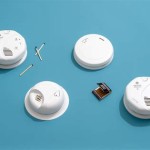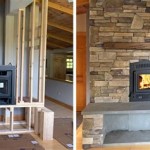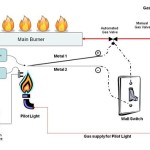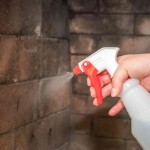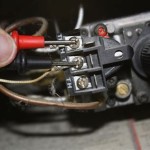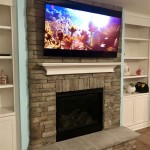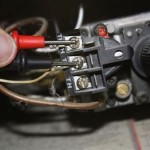```html
Painting the Inside of a Wood Fireplace: A Comprehensive Guide
Painting the interior of a wood-burning fireplace is a common practice undertaken for both aesthetic enhancement and, in some instances, to address concerns about soot stains or to provide a cleaner appearance. However, it is crucial to understand the specific materials and procedures involved to ensure safety and prevent potential hazards. The fireplace's interior is subjected to extreme temperature fluctuations, which necessitates the use of specialized, heat-resistant paints. Failure to adhere to these requirements can result in paint peeling, cracking, or even the release of harmful fumes during operation.
The following details the essential steps in preparing and painting the inside of a wood fireplace, highlighting the necessary safety precautions and material selection criteria. This information is intended to provide a comprehensive guide for achieving a durable and visually appealing result.
Key Point 1: Preparation is Paramount
Before any painting can commence, meticulous preparation of the fireplace interior is indispensable. This stage involves cleaning, repairing, and priming the surfaces to be painted. A poorly prepared surface will significantly compromise the adhesion and longevity of the paint finish.
The initial step is to thoroughly clean the fireplace. This process should begin with the removal of any loose debris, such as ash, soot, and creosote. A shop vacuum equipped with a HEPA filter is the most effective tool for this task, as it prevents the recirculation of fine particles into the air. Pay particular attention to corners and crevices where debris tends to accumulate. A stiff-bristled brush can be used to dislodge stubborn deposits.
Following vacuuming, wash the interior surfaces with a solution of trisodium phosphate (TSP) or a TSP substitute. TSP is a strong degreaser that effectively removes soot and grease, creating a suitable surface for paint adhesion. Always wear appropriate protective gear, including gloves and eye protection, when handling TSP. Follow the manufacturer's instructions for dilution and application. Rinse the surfaces thoroughly with clean water to remove all traces of TSP.
Once the fireplace is clean, inspect the interior for any cracks or damage to the firebox or its surrounding masonry. Small cracks can be filled with a high-temperature refractory mortar. Apply the mortar according to the manufacturer's instructions, ensuring it is fully cured before proceeding. For larger cracks or structural damage, professional assessment and repair may be required. Ignoring structural issues can pose a significant safety hazard.
After repairs are complete, the surface should be primed with a high-heat-resistant primer specifically designed for fireplaces. This primer will enhance paint adhesion and provide a uniform surface for the topcoat. Apply the primer in thin, even coats, following the manufacturer’s drying time recommendations. Multiple thin coats are generally preferable to a single thick coat, as they are less prone to cracking and peeling.
Key Point 2: Selecting the Right Paint
The most critical aspect of painting a wood fireplace is selecting the appropriate paint. Standard household paints are not suitable for the high-temperature environment of a fireplace. These paints lack the necessary heat resistance and will likely break down, peel, and potentially release harmful fumes when exposed to heat. Only high-heat-resistant paints specifically formulated for fireplaces should be employed.
High-heat-resistant paints are typically based on silicone or ceramic formulations. These paints are designed to withstand temperatures of up to 1200 degrees Fahrenheit (649 degrees Celsius) or higher. It is crucial to verify the temperature rating of the paint to ensure it is adequate for the expected operating temperatures of the fireplace. Exceeding the paint's temperature limit can lead to premature failure and potential hazards.
When choosing a high-heat-resistant paint, consider the desired finish. These paints are available in a range of colors and finishes, including matte, satin, and gloss. Matte finishes tend to be more durable and less prone to showing imperfections, while gloss finishes are easier to clean. Select a finish that complements the overall aesthetic of the fireplace and the surrounding room. Black is a common choice for fireplace interiors, as it effectively conceals soot and provides a classic look.
Read the paint's technical data sheet carefully before purchasing. This document will provide information on the paint's composition, temperature rating, application instructions, and curing time. Adhering to the manufacturer's recommendations is essential for achieving optimal results and ensuring the safety of the application.
It is advisable to purchase paint specifically labeled for fireplace interiors. While some high-heat paints are marketed for other applications, such as stoves or grills, paints formulated specifically for fireplaces often contain additives that enhance their soot resistance and improve their overall performance in a fireplace environment.
Key Point 3: Application and Safety Considerations
Proper application techniques and safety precautions are crucial when painting the inside of a wood fireplace. The application process should be carried out in a well-ventilated area, and appropriate personal protective equipment should be worn.
Before commencing painting, protect surrounding surfaces with drop cloths or plastic sheeting. This will prevent paint splatters from damaging floors, walls, or furniture. Ensure that the fireplace is completely cool before starting the painting process. Working on a hot surface can cause the paint to dry too quickly and may result in uneven coverage or blistering.
Apply the high-heat-resistant paint in thin, even coats using a brush, roller, or spray gun. Multiple thin coats are generally preferable to a single thick coat, as they promote better adhesion and prevent sagging. Allow each coat to dry completely before applying the next. The drying time will vary depending on the paint formulation and environmental conditions.
When using a brush, choose a high-quality brush with synthetic bristles. Natural bristles are not suitable for use with high-heat-resistant paints, as they may break down or become damaged by the solvents in the paint. Apply the paint using smooth, even strokes, avoiding excessive brush marks. When using a roller, select a roller cover with a short nap. A short nap will provide a smoother finish and prevent the paint from becoming trapped in the roller.
If using a spray gun, follow the manufacturer’s instructions for proper spraying techniques. Ensure that the spray gun is clean and properly adjusted to prevent splattering or uneven coverage. Apply the paint in thin, overlapping passes, maintaining a consistent distance from the surface.
Ventilation is paramount when painting indoors. Open windows and doors to allow fresh air to circulate. Consider using a fan to further improve ventilation. Wear a respirator or dust mask to protect against inhaling paint fumes or particles. Wear gloves and eye protection to prevent skin and eye irritation.
After applying the final coat of paint, allow the fireplace to cure completely before using it. The curing time will vary depending on the paint formulation and environmental conditions. Refer to the manufacturer's instructions for specific curing time recommendations. Prematurely exposing the painted surface to heat can compromise the integrity of the paint finish.
During the initial few burns after painting, be aware that some paints may emit a slight odor as they fully cure under heat. This is normal and should dissipate after a few uses. Ensure adequate ventilation during these initial burns.
Regularly inspect the painted surface for any signs of cracking, peeling, or discoloration. Addressing minor issues promptly can prevent more extensive damage in the future. Touch up any damaged areas with the same high-heat-resistant paint. With proper preparation, application, and maintenance, a painted fireplace interior can provide both aesthetic appeal and protection for many years.
```
Paint The Inside Of Your Fireplace And Change Grout Color

How To Spray Paint Fireplace Interior The Diy Playbook

Interior Brick 4 Tips For Painting A Fireplace

How To Paint A Brick Fireplace Young House Love

What Kind Of Paint To Use On The Inside A Fireplace Hunker

Painting The Interior Of A Fireplace Shine Your Light

How To Paint Inside A Fireplace An Updated Look Painting

Paint Inside Of Your Fireplace South House Designs

How To Paint A Brick Fireplace Young House Love

How To Paint The Inside Of A Fireplace Craftivity Designs
Related Posts

